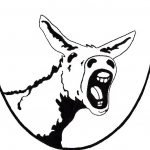 Good conferences generally receive far more worthy session proposals than they can cram into their program. I know it hurts to have a proposal rejected. I went through many iterations of that early in my presenting career. Spending hours of time and effort on a well-crafted proposal, only to have it rejected, makes one want to scream!
Good conferences generally receive far more worthy session proposals than they can cram into their program. I know it hurts to have a proposal rejected. I went through many iterations of that early in my presenting career. Spending hours of time and effort on a well-crafted proposal, only to have it rejected, makes one want to scream!
Turn that rejection into a positive learning experience. Here are a few quick tips based on my own experience. (This is a quick post, I don’t have a lot of time, so I apologize for it being rough and lacking illustrations!)
Get Feedback
When I chair a conference program track, I email each submitter whose proposal we have to reject with specific reasons we turned their proposal down. I think anyone who takes the trouble to submit a proposal deserves to know why it didn’t make the cut.
If you don’t get any information from the conference, see if you can find out who was on the review committee and approach them personally. Ask if they’d be comfortable sharing some feedback about your proposal. It can’t hurt to politely ask, and hopefully they will be willing to help you. The reason may be as simple as “We had four proposals on that topic, we only had room in our program for one, and we chose a different one because <fill in reason here>.”
Ask friends or social media contacts who have more experience presenting at conferences to review your proposal and give you feedback. Ideally you did this before you even submitted, but even so, perhaps they can speculate as to what might improve your proposal for the next conference.
I like to learn whether a topic I have in mind is engaging to enough people. Reach out to your local user group, community of practice or social media contacts to see if your topic has an audience.
Get a mentor
There are organizations that help newbie presenters put together proposals and conference sessions. Speak Easy has a terrific mentoring program. Reach out!
The Agile Alliance’s Women in Agile program is holding a half day session, open to everyone, the day before Agile 2017. They are offering mentoring to anyone who wants to submit a lightning talk for the closing keynote of the day. Seize this opportunity, or others like it.
Ask your friends or social media friends who already present at conferences if they will mentor you. The software community is generally a caring and giving place. Don’t be afraid to ask for help!
Pair!
I pair for all my conference sessions. I try to pair with a newbie presenter to give them experience and help them build confidence. Even pairing with a newbie is a huge help to me. We have twice the ideas, twice the capability, and twice the discipline. I don’t want to let my pair down, so I put more effort into preparing and practicing for the session. We can come up with terrific exercises and make the session a much better learning experience for participants than if I were to do it all on my own. Pairing is more fun, too!
Improve your presenting skills
There is a lot of research into how we learn and how we can help our fellow humans learn. For me, reading Sharon Bowman’s Training from the Back of the Room transformed my ability to create a great learning experience for participants. Presenting is a lot of work. You’ll need a lot of prep time to create the right visual aids, exercises and other activities, and to rehearse your content. The hard work pays off.
Improve your proposal skills
There’s a lot of advice out there for improving your proposals. Natalie Warnert has some great tips on her blog. Ryan Ripley’s Agile for Humans podcast has a helpful episode on improving conference submissions.
One of the best ways to get insight into what makes a compelling proposal is to volunteer for conference program review committees. They all need help – go offer!
Don’t give up
I started submitting to conferences back in the 90s when you had to send a whole paper on your topic along with your abstract. After several rejections, I was talking to a technical writer where I worked at the time. She offered to edit my abstract and paper before I submitted it to another conference. Wow, professional writing! Not only was my paper accepted, I won 2nd prize for best paper. I have depended on professional editors for my writing ever since! If you don’t know any professional writers, seek out your friends who have good written communication skills and ask them to edit your proposal.
I present at conferences, despite that being WAY out of my comfort zone, because I like to go learn stuff and meet people. It’s worth all the effort. Keep trying! And please, let me know if I can help.



3 comments on “Learning from rejection: Getting proposals accepted”
Thanks Lisa. Good advice. As a program chair, it’s generally not choosing the good from the bad. It’s choosing the good from the good. And I usually get 5-7 times more proposals than I have room for on the program. For me, it’s a great problem to have. I wish I could select them all. One more comment — if you’re a first time conference speaker, please submit your proposal. It’s the content that counts; not your conference speaking resume.
[…] Learning from rejection: Getting proposals accepted – Lisa Crispin – https://lisacrispin.mystagingwebsite.com/2017/05/09/learning-rejection-getting-proposals-accepted/ […]
[…] Learning from rejection: Getting proposals accepted – Lisa Crispin […]